AMD Radeon HD 7970 GHz Edition Video Card Review
Radeon HD 7970 GHz Edition – What is it?
Over six months ago AMD released the AMD Radeon HD 7900 series with the introduction of the Radeon HD 7970 ‘Tahiti’ graphics card. This card became the flagship video card for AMD and has proven itself to winner thanks to having great performance due to the GCN architecture, a ton of overclocking headroom and awesome new power saving features like AMD ZeroCore Power. We’ve reviewed a number of AMD Radeon HD 7900 series cards over the past few months and all did very well in our testing. AMD had the must have gaming graphics card from December 2011 till March 2012. It was in March that NVIDIA launched the GeForce GTX 680 ‘Kelper’ graphics card and then began rolling out the rest of the competitive GeForce 600 series cards. What was AMD going to do next?

We were thinking the same thing until last month. During the AMD Fusion Developer Summit 2012 we were invited to a video card press member update. It was in this meeting that we found out that the AMD Radeon HD 7970 was turning 6 months old! The Radeon HD 7970 was released back in December 2011, so it was already 6 months old and AMD commissioned a cake saying happy half birthday to Tahiti!

It was between bites of cake that we learned AMD was planning on releasing a successor the AMD Radeon HD 7970, the AMD Radeon HD 7970 GHz Edition.
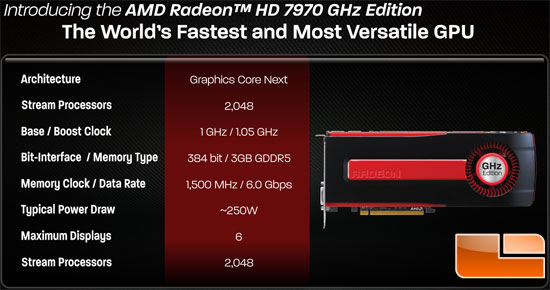
At first glance the AMD Radeon HD 7970 GHz Edition (XT2) video card looks identical to the Radeon HD 7970 (XT1), but fear not it is pretty much the same card. AMD has basically just tweaked what is under the hood a bit and is releasing a new card. Most of the changes have been done in the vBIOS, but there are also a few minor component changes as well. AMD did not want to discuss what component changes were done, but assured us 100% that there were physical changes done and not just all software changes.
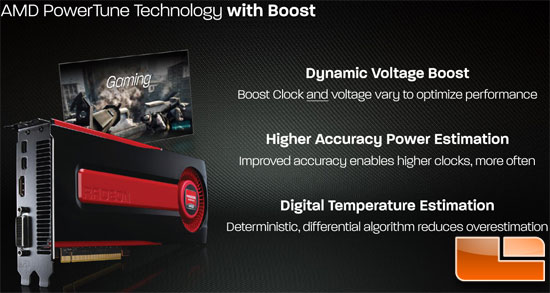
The AMD Radeon HD 7970 GHz Edition runs faster than the original version and has a new feature called boost. The AMD Radeon HD 7970 GHz Edition has a standard 1000MHz core clock speed and then can be dynamically boosted to 1050MHz when the headroom is available. The video card monitors the power draw and temperatures and then can change the GPU frequency and voltage when needed. This allows the AMD Radeon HD 7970 GHz Edition to go up to 1050MHz on the core clock. The memory clock speed has been increased to 1500MHz and it does not dynamically change. The AMD Radeon HD 7970 GHz edition has better accuracy when it comes to power estimation and we think the hardware changes on the card were for better monitoring.
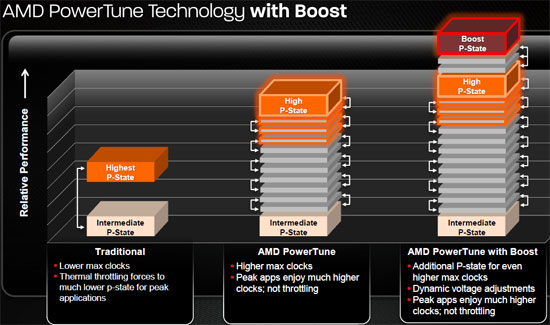
Since AMD PowerTune Technology with Boost is brand new we figured that we would include the above slide to show you how Boost works and what the Boost P-state is.
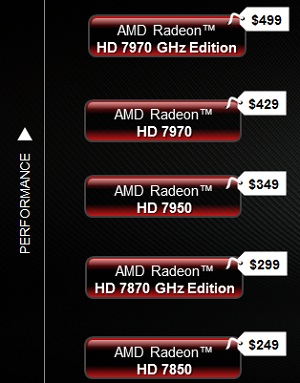
Many of our readers might have figured out by now that the Radeon HD 7970 GHz is more or less a factory overclocked Radeon HD 7970. The new vBIOS raises the default clock speed from 1000MHz (1050MHz w/ Boost) from 925MHz and the memory clock to 6GHz from 5.5GHz. The voltage was also increased from 1.175V to 1.240V. All these changes are done in the vBIOS and an owner of the original Radeon HD 7970 card can flash their card to the 7970 GHz Edition BIOS and get basically the same thing for free. Not all cards will be able to reach these levels, but seeing how the AMD Radeon HD 7970 GHz edition costs $499 and the Radeon HD 7970 costs $429 it might be worth trying out in order to save $70.
The official AMD Radeon HD 7970 GHz Edition BIOS was released here, so current 7970 owners are in luck if they own a reference card that can handle these new speeds. If the vBIOS flash works they should be able to attain the same performance levels as the Radeon HD 7970 GHz card. Not all AMD Radeon HD 7970 cards use the reference PCB and design, so be careful when flashing any card and understand that you are taking a risk. If you don’t want to risk it then you should pay the extra $70 and just get the 7970 GHz Edition that is guaranteed to work!
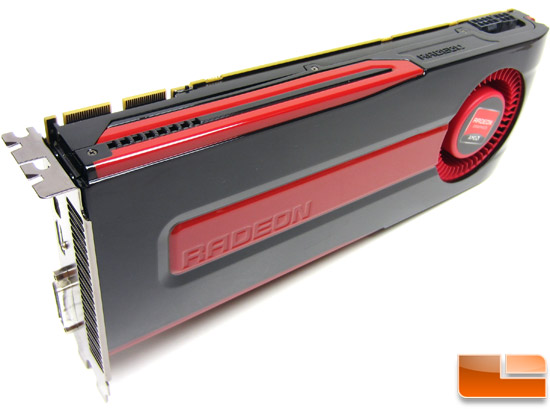
Since the AMD Radeon HD 7970 GHz Edition video card is physically the same as the original we’ll skip straight to benchmarking now. If you’d like to learn more about the card design you can reference the original review.

Comments are closed.